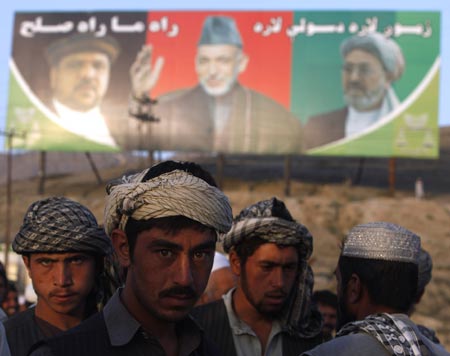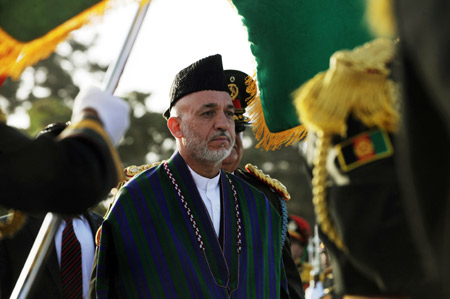Turning out to the polling stations to elect their new president and 420 provincial council members, the Afghan people has embarked upon a crucial exercise that possibly play an effective role in shaping their future.
 |
|
Afghan labourers wait to be hired for work in front of a picture of incumbent Hamid Karzai (C) in Kabul August 18, 2009.The Afghan presidential election will take place on August 20.[Xinhua]
|
The election, second after the removal of the Taliban government in 2001, not only serves as a benchmark to assess the level of political advancement in Afghanistan, but also helps bring issues, pertaining to the country's security, socio-economic development, governance and drug control, to the spotlight.
Over 90,000-strong international forces and thousands of Afghan National Army (ANA) and Afghan police soldiers are battling Taliban insurgents, who, in recent weeks, have intensified their rebellious activities beyond perception.
McChrystal, the commander of the NATO-led forces in Afghanistan, in an interview with Wall Street Journal a couple of days ago, said that "the Taliban are moving beyond their traditional strongholds in southern Afghanistan to threaten formerly stable areas in the north and west."
 |
|
Afghan President Hamid Karzai returns from inspecting the guard of honor during Independence Day celebrations at the Defence Ministry compound in Kabul August 19, 2009. [Xinhua]
|
Two weeks ago, the Taliban killed a district chief in the northern Kunduz province. Earlier, Mohammad Qasim Fahim, President Karzai's running mate in the presidential elections, escaped an ambush in Kunduz while the former president, Burhanuddin Rabbani was attacked in the same area last week.